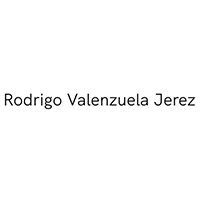查看完整案例


收藏

下载
设计师的朋友S先生和P女士想要一座便宜、易于建造且带有三角屋顶的海滨小屋。他们计划在那里度过周末和假期,并且日后有可能在那里定居。他们期待邀请家人和朋友留宿,也或许,他们会有自己的孩子,等到那时,周末带朋友来玩对他们来说一定会是非常棒的体验。他们不知道将来会发生什么,但是又有谁知道呢?
My friends Mr S and Ms P wanted a cheap, easy to build beach house with a triangular shaped roof.
Their idea was to spend weekends and vacations there, with an intent to possibly move there at some point in the future. They liked the idea to invite family and friends to stay over and who knows, maybe one day they would have kids and it would certinaly be nice for them to bring their friends to play at the weekend. They didn’t know what would happen in the future, but then, who does?
▼项目远观,distant view © Macarena Alvarez
按照智利建筑的标准,这座房子相对便宜。但是没有业主预期的那么便宜,其建设成本约为950美元/平米。设计师需要像往常一样在技术质量、总体舒适度和成本建立平衡。因此在该项目中,设计师更多的是要不断评估如何利用常规资源实现非常规风格的建筑。每当有问题出现,设计师都会使之迎刃而解。
The house was relatively cheap for Chilean building standards. Yet, of course not as cheap as the owners would have hoped. The construction cost was approximately 950 USD/sqm. It was as usual necessary to negotiate between technical quality, general comfort and costs. Thus, the project for us was mostly about constantly assessing how to achieve a construction that is different from ordinary vernacular, but with resources typical of it. For each element the question arises, and for each question we were eventually challenged to find a way to decide.
▼项目鸟瞰,aerial view © Macarena Alvarez
尽管房屋外观简单,或许也正因为如此,施工过程面临一些挑战。业主、承包商和设计师不断地反思原始设计,并讨论施工过程的简化和房屋后期维护的问题。木结构在外部支撑着房屋,围护结构采用标准材料,包括涂漆纤维混凝土、铝制窗框和屋顶沥青膜。房屋周围还安装了连续的隔热层,从而实现热舒适。室内表面大多覆盖无节松木,小房间采用石膏墙,浴室采用瓷砖墙。
Despite (or precisely because of?) the house’s rather simple appearance, the construction process had a few challenges. The team (owners/contractor/architect) were constantly reviewing the original design and discussing adjustments that could ease the construction process and/or the future house’s maintenance. A timber structure supports the house from the outside. Standard materials were used as the envelope: painted fiber concrete, aluminum windows frame and an asphalt membrane on the roof. However, there was particular concern with the installation of a continuous layer of insulation around the house for thermal comfort. The interior is mostly cladded in knotless pinewood, drywalls are used in the smaller rooms and porcelain tiles in bathrooms.
▼西立面,west facade © Macarena Alvarez
▼局部立面,partial facade © Macarena Alvarez
▼木结构支撑房屋 © Macarena Alvarez the timber structure supports the house
▼铝制窗框,the aluminum windows frame © Macarena Alvarez
屋顶建造相对容易,而业主想要避免结构元素出现在内部空间,从而获得最大限度的空间自由。为了实现这一点,设计师在两侧长向立面上增加了一组外部悬臂梁。此外,梁不仅可以用作屋檐,而且塑造了房屋形态。
That was the easy part, however the owners also wanted to avoid structural elements in the interior space for maximum freedom. To achieve this, we added a couple of exterior cantilevered beams over both long façades. On top of that, the beams function as eaves and also establish the house’s form.
▼三角屋顶,the triangular shaped roof © Macarena Alvarez
▼悬臂梁用作屋檐,the beams function as eaves © Macarena Alvarez
▼屋檐细部,details of the eaves © Macarena Alvarez
房屋整体布局采用宽敞的开放平面,两个垂直布置的内部模块将其分开。每个模块内部都有一个小房间和一间浴室,并在上方形成阁楼区域。房屋简单地分为两个大空间、两个小空间、两个阁楼区域和两间浴室,具有多种潜在用途。这就是设计对项目最初不确定性的回应方式——使建筑面向未来?如果业主愿意,他们可以建造大型卧室,结合其他房间做步入式衣柜和套房浴室。他们也可以睡在小房间里,把大房间用作家庭办公室、图书室或者儿童游戏室。如果他们想有一间家庭办公室,便可以将其设置在阁楼区域,然后将另一个阁楼用作客房……这些设想的功能由物件定义,因此只要通过移动家具和电器,他们便能重新定义不同空间。
The overall configuration of the house is made up of a large open floor plan split by two interior modules placed perpendicularly. Each module has a small room and a bathroom inside and produces an upper loft area above it. The house can be simply read as two large spaces, two small spaces, two upper loft areas, and two bathrooms that allow for a number of potential uses. This is the way in which the design responded to the initial indeterminacy of the program – futureproofing the building? If they want, they could set up a huge bedroom and include the other rooms as walk-in closet + en-suite bathroom. They could sleep in a small room and use the larger room as a home-office, a library or a children’s playroom. They could also place the home-office (if they want to have one) at one of the upper loft areas. Leave the other loft area as guest room… etcetera. The hypothesis is that programs are primarily defined by objects, hence just by moving furniture and appliances they will be able to reprogram the different spaces.
▼垂直布置的内部模块 © Macarena Alvarez the interior module placed perpendicularly
▼阁楼区域,the loft area © Macarena Alvarez
▼采用木墙的大房间 © Macarena Alvarez the large rooms with wooden walls
▼采用石膏墙的小房间 © Macarena Alvarez the small room with drywalls
最后,业主以合理的价格买了一座海滨小屋,他们在第一天就构想出了三角屋顶。他们的女儿在房子完工前就出生了,设计师也因此决定把两个楼梯的第一阶移走,使她远离上方的阁楼区域。现在,业主可以打理自己的花园,让生活融于房屋。
Finally, they got a beach house at a reasonable price, and with the triangular roof they had in mind from day one. Their daughter was born before the house was finished, so we decided to remove both stairs’ first step and leave the upper loft areas out of her reach. They can now work on their garden and let their lives take over the house.
▼细部,details © Macarena Alvarez
▼轴测图,axon © RODRIGO VALENZUELA JEREZ
▼区位图,location © RODRIGO VALENZUELA JEREZ
▼一层平面图,ground floor plan © RODRIGO VALENZUELA JEREZ
▼二层平面图,upper floor plan © RODRIGO VALENZUELA JEREZ
▼南立面图,south elevation © RODRIGO VALENZUELA JEREZ
▼东立面图,east elevation © RODRIGO VALENZUELA JEREZ
▼剖面图,sections © RODRIGO VALENZUELA JEREZ
Location: Tunquén, Región de Valparaíso, Chile Design: 2017 Completion: 2019 Project area: GFA 120 m2/ Site area 5000 m2 Principal Architect: Rodrigo Valenzuela Jerez Project Architect: Juan Pablo Valenzuela Ardiles Drawings: Valentina Varela Consultants: DEC Ingenieros – Marcelo Sepúlveda (Structural Engineer) Ingeniería JM (Electrical Engineer) General Contractor: UNIH Arquitectura & Construcción – Eduardo Hirose Photography: Macarena Alvarez











































